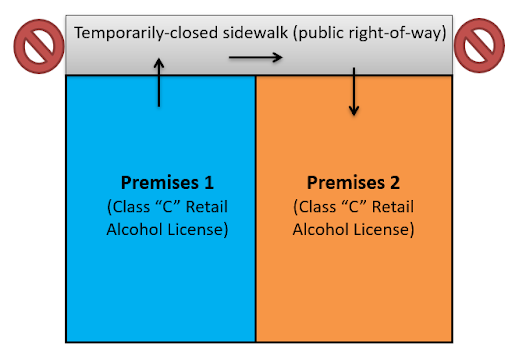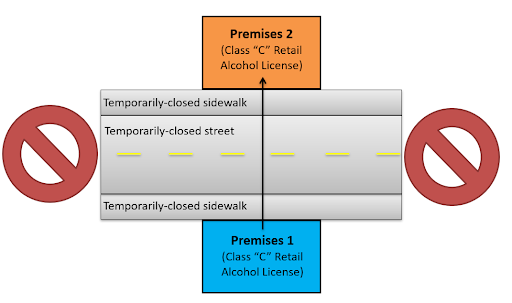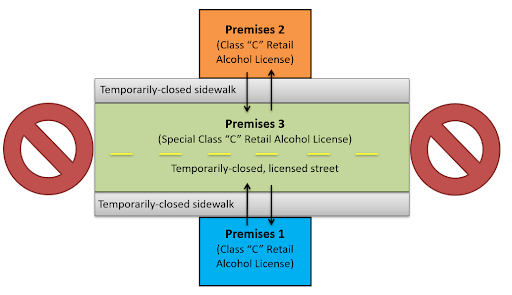EXAMPLE 1
Two licensed premises are connected by an immediately-adjacent, temporarily-closed public right-of-way (the sidewalk). Open containers of alcoholic liquor, wine, or beer can be allowed to leave Premises 1 and be carried onto Premises 2. However, Premises 2 is not required to allow patrons to enter with alcoholic beverages.
EXAMPLE 2
Two licensed premises are connected by immediately-adjacent, temporarily-closed public right-of-ways (the sidewalks and the street). Open containers of alcoholic liquor, wine, or beer can be allowed to leave Premises 1, be carried through the temporarily-closed sidewalks and street, and be carried onto Premises 2. However, Premises 2 is not required to allow patrons to enter with alcoholic beverages.
EXAMPLE 3
A public street is temporarily closed and licensed under a special class “C” retail alcohol license (BW). The sidewalks immediately adjacent to the street are also temporarily closed. Open containers of beer or wine can be allowed to leave Premises 1 or Premises 2, be carried through the temporarily-closed sidewalks, and be carried onto Premises 3.
However, alcoholic liquor cannot be brought onto Premises 3 because the retail alcohol license held by Premises 3, a special class “C” retail alcohol license (BW), does not allow for the sale or consumption of alcoholic liquor. Additionally, Premises 3 is not required to allow patrons to enter with open containers of beer or wine.
Open containers of beer or wine purchased on Premises 3 can be allowed to leave Premises 3, be carried through the temporarily-closed sidewalks, and be carried onto either Premises 1 or Premises 2. However, neither Premises 1 nor Premises 2 is required to allow patrons to enter with open containers of beer or wine.


